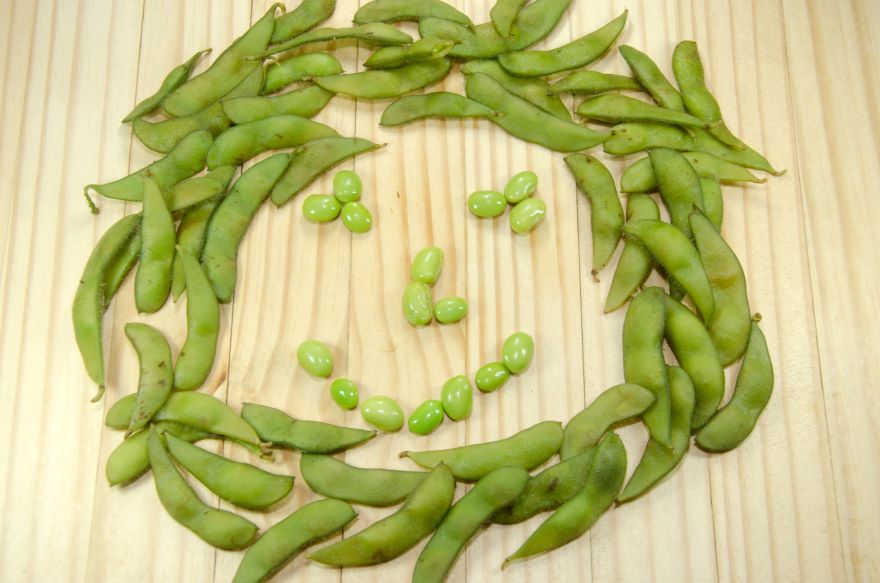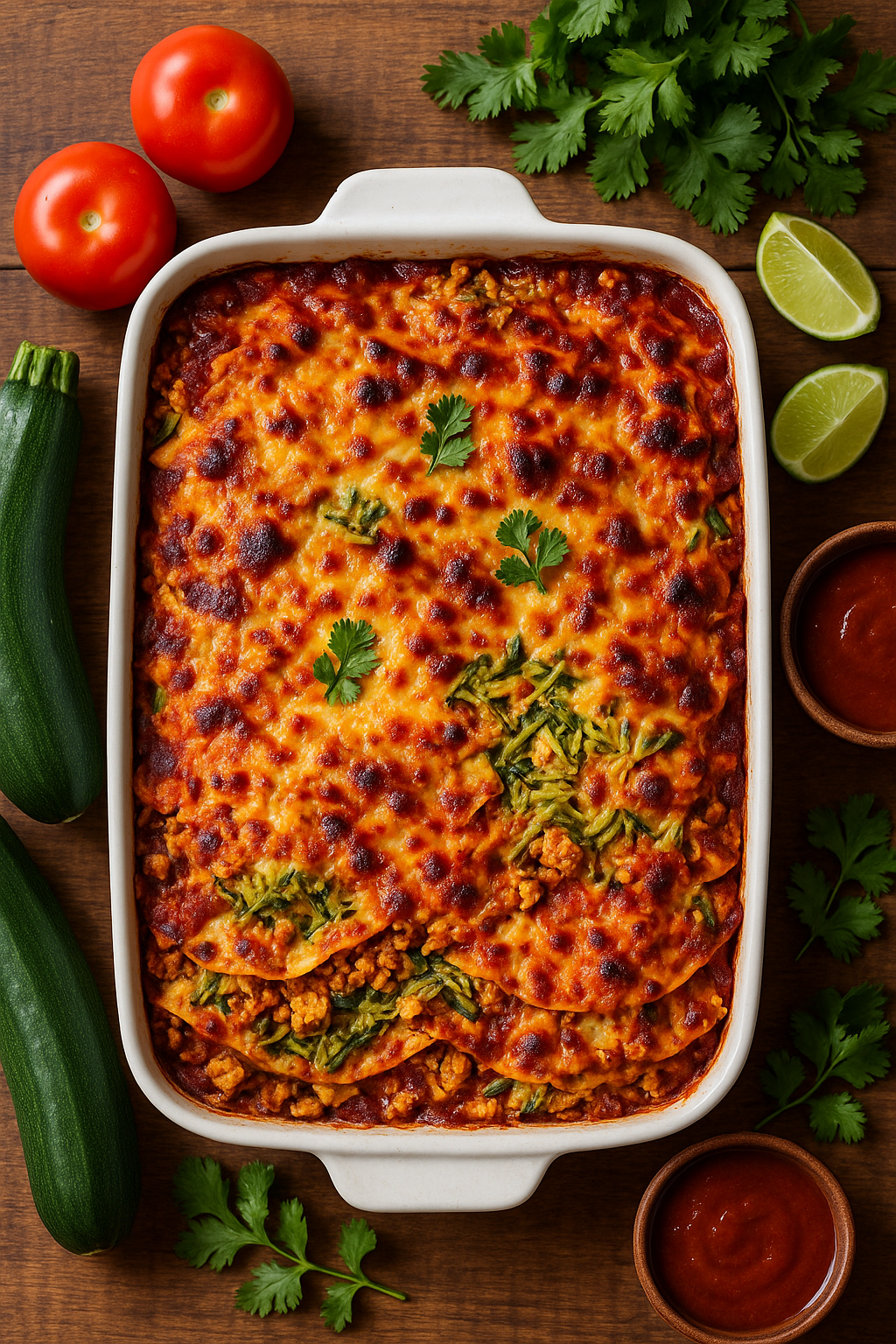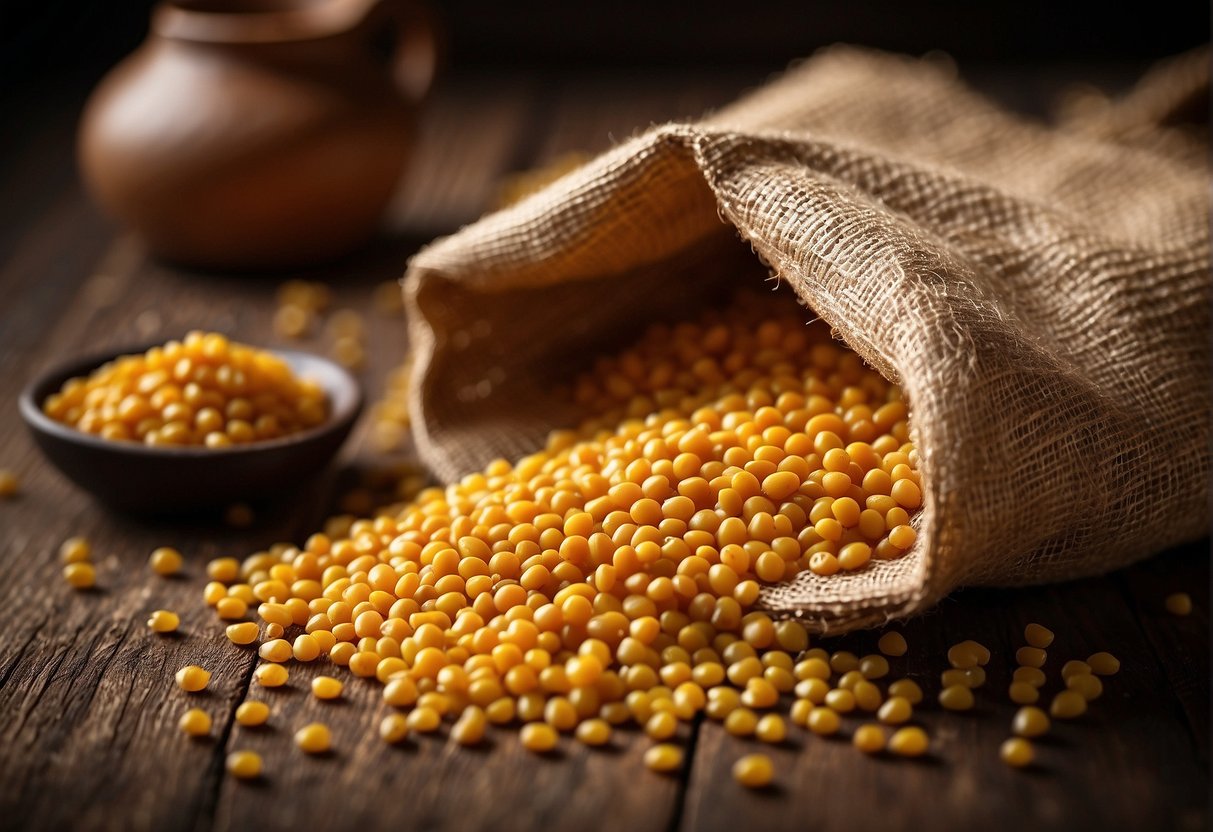A few months ago, I was in a local grocery store when I found myself staring at two very similar-looking green packages. One was labeled “edamame,” and the other “mukimame.” The issue of Mukimame vs. Edamame caught my attention. I knew the difference, but there was still some confusion about their uses and nutritional value.
Bruce wasn’t around to validate those thoughts, and while more plant-based proteins had been making their way into the diet, the difference between these two soybean products still wasn’t entirely clear—a confusion many others likely share.
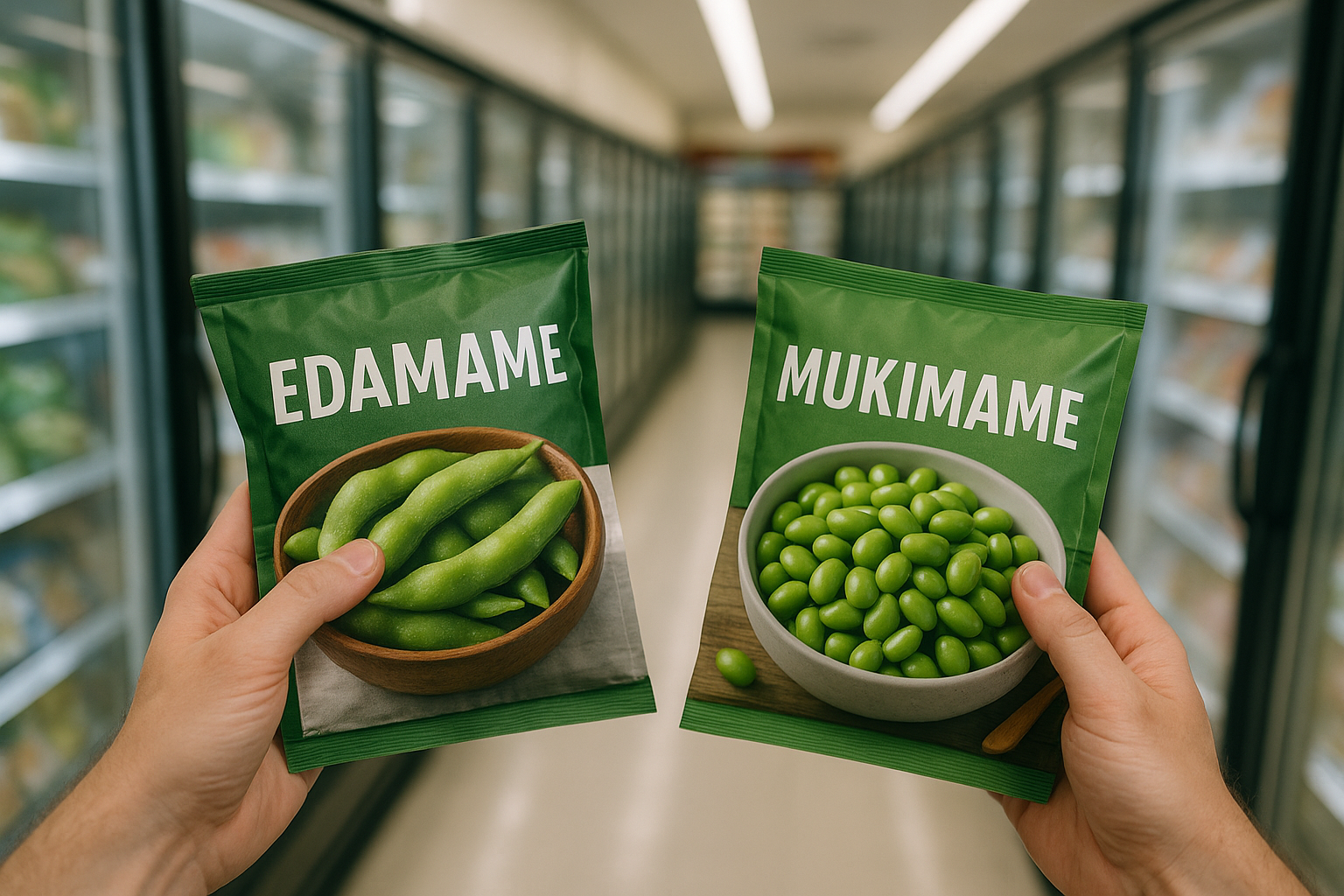
The Basic Difference
While both products come from identical young soybeans, their different presentations create distinct culinary experiences and practical applications. Edamame refers to immature soybeans served in their natural pods, while mukimame presents the same beans pre-shelled for convenience. Understanding this fundamental distinction opens the door to making informed choices based on your cooking needs and lifestyle preferences.
The distinction between these two products lies entirely in their presentation rather than their botanical identity. Edamame, which translates to “branch beans” in Japanese, refers to immature soybeans that remain nestled within their protective pods. Mukimame represents the identical young soybeans but with the pods completely removed, essentially creating pre-shelled edamame that prioritizes convenience over traditional experience.
Mukimame vs Edamame: Nutritional Comparison and Health Benefits
Both mukimame and edamame deliver identical nutritional profiles since they originate from the same young soybeans. Each cup provides approximately 17 grams of complete protein, containing all nine essential amino acids necessary for optimal health. This complete amino acid profile distinguishes soy products from most other vegetable proteins, which typically lack one or more essential amino acids.
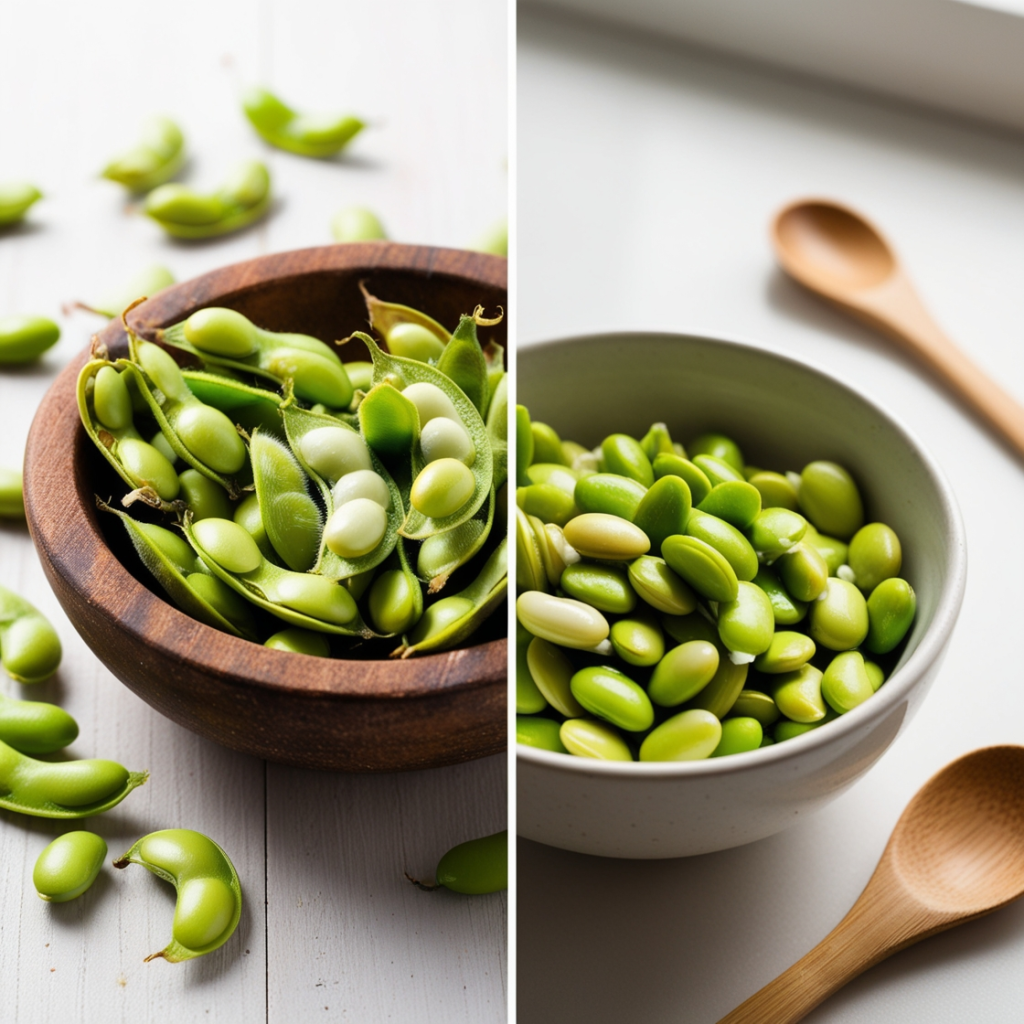
The fiber content remains consistently high in both forms, delivering 8-10 grams per serving. This substantial fiber contribution provides multiple health benefits beyond simple digestive support. High fiber intake helps regulate blood sugar levels by slowing glucose absorption into the bloodstream, making these beans particularly valuable for individuals managing diabetes. The fiber also promotes satiety, creating fullness that supports effective weight management without leaving you hungry between meals.
Each serving contains approximately 188 calories, making either choice a nutrient-dense, relatively low-calorie protein source that fits well into various dietary approaches. The caloric density allows for generous portions without derailing dietary goals, while the high protein content helps preserve muscle mass during weight loss efforts.
Essential Vitamins and Minerals
Both products provide significant amounts of folate, a B-vitamin crucial for DNA synthesis and particularly important for pregnant women in preventing neural tube defects. The vitamin K content supports bone health and proper blood clotting function, while the iron contributes to oxygen transport throughout the body and helps prevent anemia.
The calcium content, while modest compared to dairy products, still contributes meaningfully to daily calcium requirements, particularly important for individuals following plant-based diets. The isoflavone content in both forms deserves special attention for its potential health benefits. These plant compounds may offer cardiovascular benefits by helping to lower cholesterol levels and supporting heart health.
The processing difference between podded and shelled versions creates minimal impact on nutrient availability. While the protective pods in traditional edamame may slightly affect absorption rates of certain nutrients during cooking, these differences remain negligible for practical dietary planning purposes.
Cost Analysis: Budget Considerations
Understanding the pricing landscape for both products helps consumers make informed purchasing decisions that align with their budget constraints and value priorities. Mukimame consistently costs 15-20% more than traditional edamame due to the additional processing requirements needed to shell the individual beans.
At major retailers across the country, frozen edamame typically costs less than mukimame, with mukimame carrying a 15-20% price premium for comparable quantities and brands. This price differential reflects the labor and processing costs associated with removing the pods while maintaining the beans’ integrity and freshness.
The price gap becomes more pronounced when examining organic varieties, which appeal to consumers concerned about pesticide exposure and environmental impact. Organic edamame averages $3.99 per pound at most retailers, while organic mukimame can reach $4.79 or higher, representing up to a 20% premium over the conventional price difference.
Money-Saving Strategies
Store brands typically offer savings of 10-15% compared to national brands for both products, making them attractive options for budget-conscious consumers who prioritize value without sacrificing quality. Warehouse stores like Costco often provide the best per-unit pricing for both varieties when purchased in larger quantities, though consumers should consider their usage patterns and freezer capacity before committing to bulk purchases.
While mukimame carries a higher upfront cost, the convenience factor translates to time savings that many busy households find valuable. The elimination of pod removal streamlines meal preparation significantly, particularly for complex recipes or meal prep sessions. Seasonal pricing variations affect both products, with prices typically lowest during summer months when fresh soybeans are harvested.
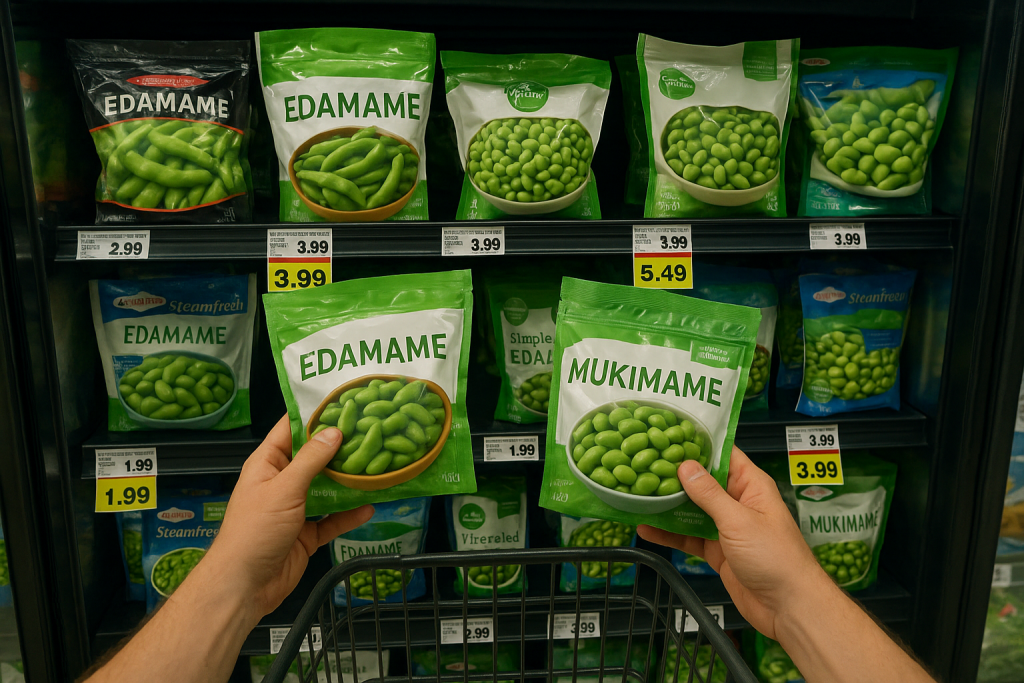
Mukimame vs Edamame: Cooking Applications and Techniques
The choice between these two products dramatically impacts your cooking approach and the types of dishes you can create effectively. Traditional edamame excels as an appetizer or standalone snack, where the pod-popping ritual becomes part of the eating experience. The classic preparation involves boiling pods in heavily salted water for 4-5 minutes until they turn bright green and the beans inside become tender.
The pod-popping ritual serves multiple purposes beyond mere consumption. It naturally slows down eating pace, allowing the brain adequate time to register fullness signals and preventing overconsumption. This built-in portion control mechanism makes traditional edamame particularly valuable for individuals working on mindful eating practices or weight management goals.
Pre-shelled mukimame opens entirely different culinary possibilities due to its ready-to-use nature. This convenience makes it superior for meal prep and multi-ingredient recipes where efficiency matters. Mukimame integrates seamlessly into salads, grain bowls, pasta dishes, and stir-fries without requiring the additional step of pod removal during busy weeknight cooking sessions.
Traditional Edamame Cooking Methods
When steaming edamame pods, allow 8-10 minutes for the steam to penetrate the pods and properly cook the beans inside. The pods act as natural steamers, protecting the beans from direct heat while allowing gentle, even cooking. For boiling methods, bring a large pot of generously salted water to a rolling boil before adding the pods. The salt penetrates the pods during cooking, seasoning the beans inside.
Cook for 4-5 minutes until the pods are bright green and slightly tender when squeezed. The social aspect of sharing a bowl of edamame creates opportunities for conversation and connection during meals, making it ideal for entertaining and family gatherings where the eating experience itself holds value.
Want to steam edamame like a pro? This beautiful 10-inch, two-tier bamboo steamer combines traditional craftsmanship with modern convenience—thanks to its stainless-steel ring for extra durability. It locks in nutrients and flavor while offering elevated presentation, perfect for serving at dinner parties or quick weeknight snacks.
Perfect for Preparing Mukimame vs Edamame: Premium Bamboo Steamer Basket

Bamboo Steamer Basket – 10 Inch 2-Tier Dumpling Bamboo Steamer for Cooking Dim Sum, Momo, Rice – Bao Bun – Natural Chinese Steam Baskets with Stainless Steel Ring Set
- 𝗛𝗜𝗚𝗛‑𝗤𝗨𝗔𝗟𝗜𝗧𝗬 𝗕𝗔𝗠𝗕𝗢𝗢 𝗠𝗔𝗧𝗘𝗥𝗜𝗔𝗟 – Crafted from durable bamboo, this bamboo steamer offers an authentic method to cook your favorite dishes with consistent results.
- 𝗬𝗢𝗨𝗥 𝗣𝗘𝗥𝗙𝗘𝗖𝗧 𝗕𝗔𝗠𝗕𝗢𝗢 𝗦𝗧𝗘𝗔𝗠 𝗕𝗔𝗦𝗞𝗘𝗧 – Steam your favorite foods with our premium steam basket, crafted from 100% natural bamboo. Ideal for steaming dumplings, fish and more. Designed to retain the authentic flavors and nutrients of your food.
- 𝗘𝗫𝗧𝗥𝗔 𝗗𝗘𝗣𝗧𝗛 𝗟𝗔𝗥𝗚𝗘 𝗦𝗧𝗘𝗔𝗠𝗘𝗥 𝗕𝗔𝗠𝗕𝗢𝗢 – Our 10-inch bamboo steamer is designed with extra depth, allowing you to steam more food at once. Enjoy easy cooking with our versatile steamer, perfect for preparing momos, bao buns and a variety of other dishes.
- 𝗖𝗢𝗢𝗞 𝗛𝗘𝗔𝗟𝗧𝗛𝗬 𝗔𝗨𝗧𝗛𝗘𝗡𝗧𝗜𝗖 𝗙𝗢𝗢𝗗 – Steaming helps retain most vitamins and keeping the flavor and food texture. Use our bamboo steamer basket for cooking fish, broccoli, and other vegetables and as bamboo rice steamer or for steam baskets dumplings.
Mukimame Preparation Techniques
Mukimame, being directly exposed to heat, requires only 3-4 minutes of steaming and careful monitoring to prevent overcooking, which can result in mushy, unappetizing textures.
Premium Multi-Pot with Steamer Insert for Versatile Cooking
Level up your kitchen game by pairing mukimame’s ready-to-eat convenience with a premium multi-pot that does it all. This gorgeously crafted 5-ply stainless steel pot—built with ultra-durable construction and a lifetime warranty—comes complete with a steamer/strainer insert. It’s perfect for quickly steaming mukimame, then switching effortlessly to boiling grains, blanching vegetables, or straining pasta without dirtying extra dishes.
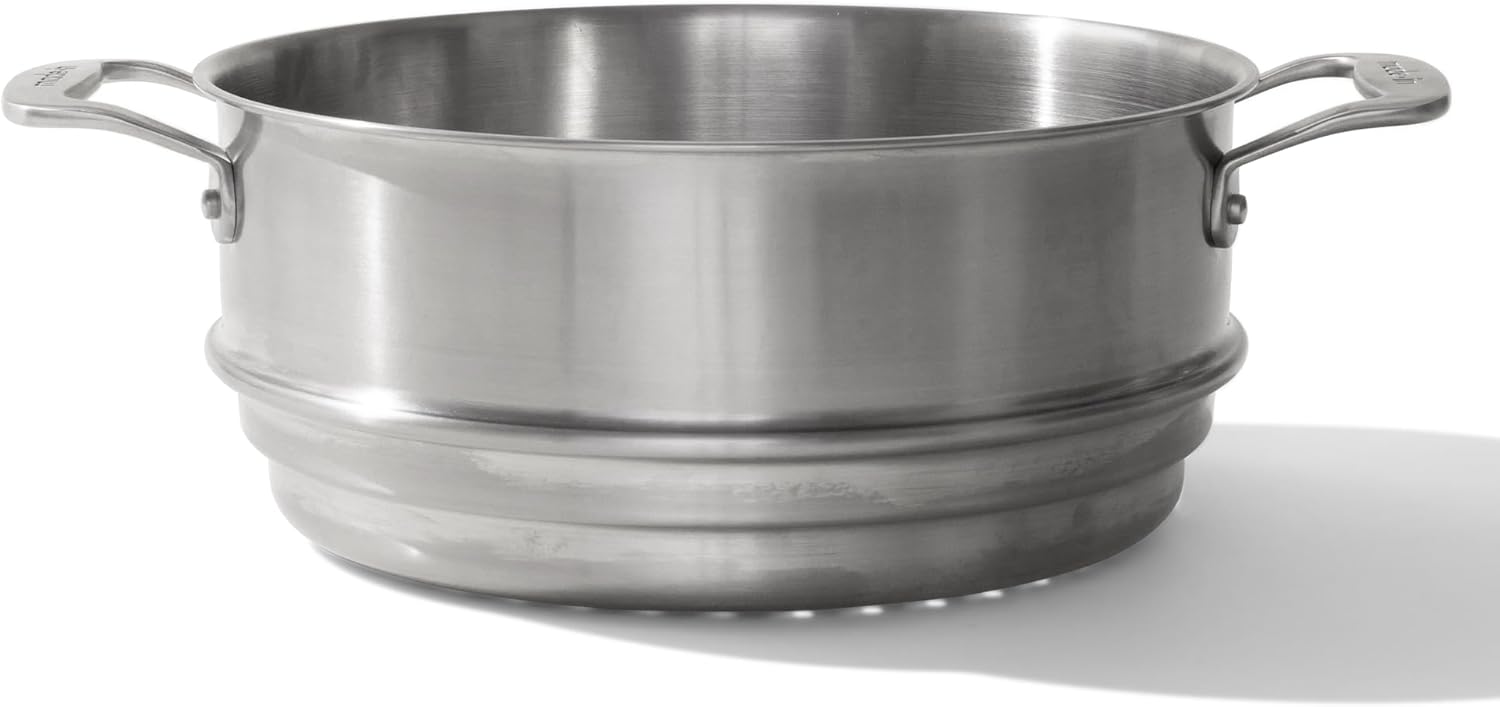
Made In Cookware – 10″ Stainless Steel Steamer Insert – Pot Strainer – 8 Quart Compatible
- Stock Pot Made in Italy
- Steamer Basket Made in China
- Premium 5-Ply Construction
- Compatible with Gas, Electric, and Induction Cooktops
For boiling, mukimame requires less time in water, typically 2-3 minutes maximum, due to direct heat exposure without protective pods.
Roasting techniques work exclusively with mukimame, creating crispy, protein-rich snacks that rival traditional nuts in both flavor and satisfaction.
Breville Smart Oven Air Fryer for Crispy Mukimame
Craving crispy mukimame? This Breville Smart Oven Air Fryer creates perfectly golden, crunchy beans with super-convection technology—healthy snacking simplified.

Breville BOV860BSS Smart Oven Air Fryer and Convection Oven, Brushed Stainless Steel
- The Breville Smart Oven Air Fryer and Convection Oven with Element iQ System delivers top performance and versatility; Air fry and choose from 11 cooking functions; Super convection reduces cooking time by up to 30% and delivers crispy, air-fried foods
- ELEMENT iQ SYSTEM: With 5 independent quartz elements, smart algorithms steer oven and fryer’s power where and when it’s needed to create a tailored cooking environment; Sensing and digital PID temperature control eliminate cold spots for precise cooking
- DEDICATED AIR FRY SETTING: Smart Oven Air Fryer turns out guilt-free French fries, chicken wings and more; Higher temperatures combine with super convection (maximized air flow) to deliver crispy golden, air-fried foods to your home kitchen
- SUPER CONVECTION TECHNOLOGY: Convection oven functionality can reduce cooking time by up to 30%; Speeds cooking process by raising hotter air and sinking colder, less dense air for quicker heating; Serve dinner sooner and spend less time in the kitchen
Thoroughly dry the mukimame after thawing, then toss with high-quality olive oil and desired seasonings. Roast at 400°F for 15-20 minutes, stirring occasionally, until the beans become golden and crispy. Sautéing mukimame with garlic, ginger, and soy sauce creates a quick side dish that pairs well with rice dishes and grilled proteins.
Safety Considerations and Preparation Guidelines
Understanding potential safety concerns and proper preparation methods ensures both enjoyable and safe consumption of either product. Soy allergies represent the most serious consideration, affecting approximately 0.4% of children and a smaller percentage of adults. Allergic reactions can range from mild digestive upset to severe, life-threatening anaphylaxis.
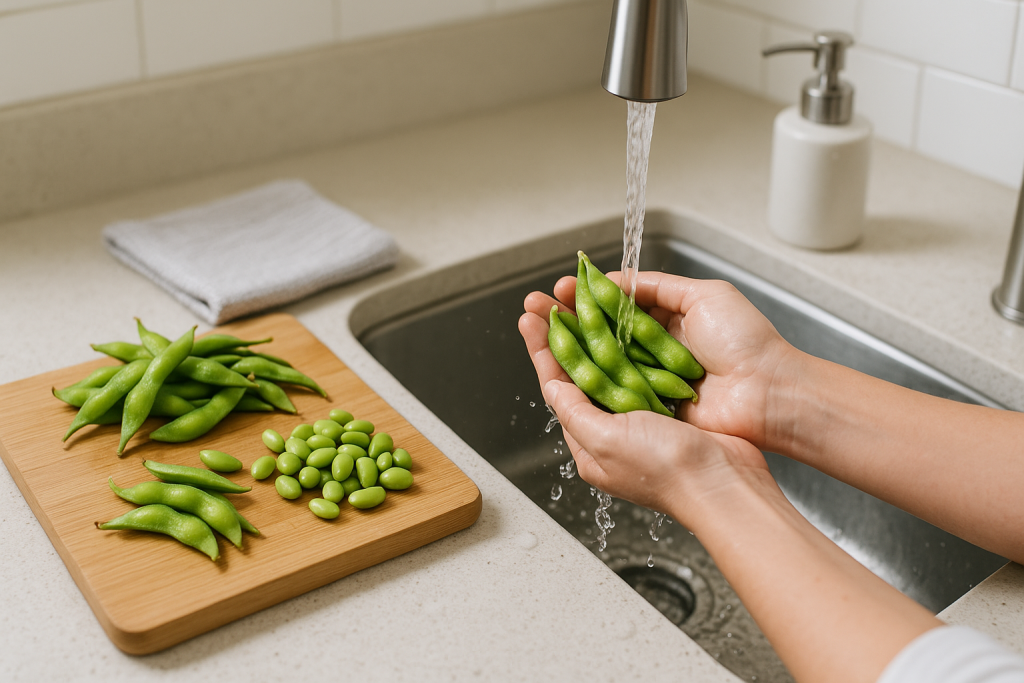
Anyone with known soy sensitivities must avoid both products entirely and should carry appropriate emergency medications if accidentally exposed. Cross-contamination concerns exist for individuals with soy allergies, particularly in restaurants or shared kitchen environments. Both products are processed in facilities that may handle other allergens, and consumers with multiple food allergies should carefully read labels.
Digestive sensitivity represents a more common concern than true allergies when comparing mukimame vs edamame. Both products may cause gas and bloating in sensitive individuals, particularly when consumed in large quantities during single meals. The high fiber content, while beneficial for most people, can cause digestive discomfort in individuals unaccustomed to high-fiber foods
Thyroid and Food Safety Concerns
Thyroid considerations require attention for individuals with existing conditions or those taking related medications. The natural goitrogen compounds in soy can potentially interfere with thyroid function at extremely high consumption levels, though normal dietary amounts rarely cause problems. Individuals with thyroid problems should consult healthcare providers about appropriate intake amounts and timing relative to medication schedules.
Food safety practices remain crucial for both products. Always cook both varieties thoroughly to eliminate potential bacterial contamination and reduce anti-nutritional factors present in raw soybeans. Never consume either product raw, as uncooked soybeans contain compounds that can interfere with protein digestion and nutrient absorption. Proper thawing techniques help maintain food safety when using frozen products.
Storage Tips for Maximum Freshness
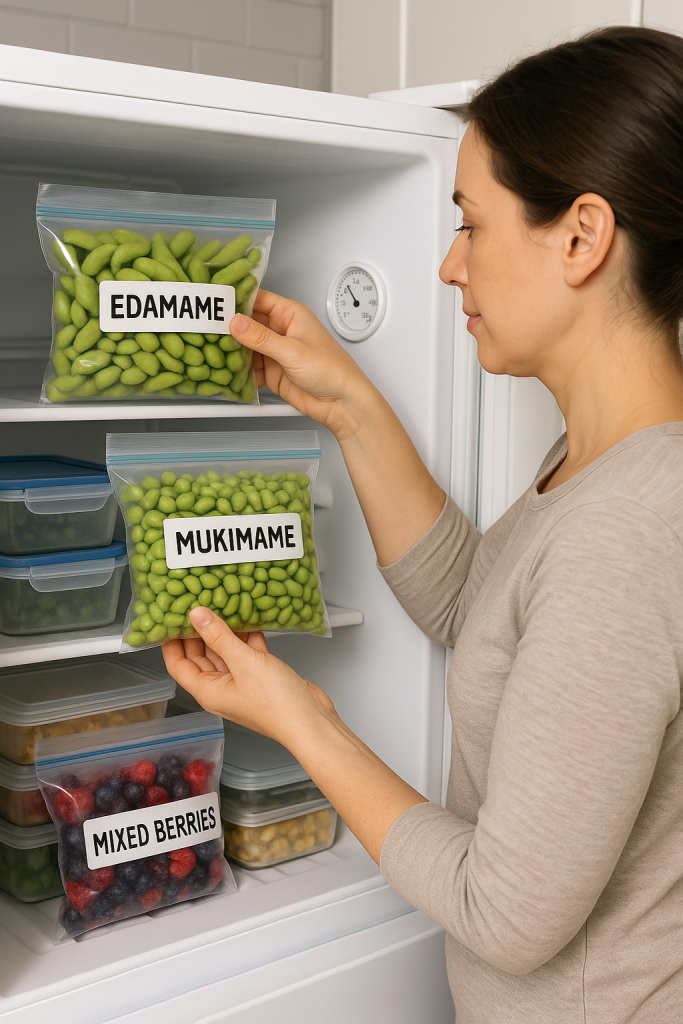
When storing mukimame vs edamame, frozen products in unopened packages maintain peak quality for up to 12 months when stored at 0°F or below.
After opening frozen packages, transfer unused portions to airtight containers or resealable freezer bags to prevent freezer burn. Opened packages retain good quality for 3-6 months in the freezer, though they should be used more quickly once thawed. Label containers with dates to ensure proper rotation.
Once thawed, both mukimame and edamame should be consumed within 3-5 days when stored in the refrigerator. Store in covered containers in the main body of the refrigerator rather than the door, where temperature fluctuations can accelerate spoilage.
Fresh Product Selection and Storage
When purchasing fresh edamame from farmers markets or specialty stores, select bright green, firm, plump pods that feel heavy for their size. Avoid pods with yellow or brown spots, which indicate age or poor storage conditions. Fresh pods should make a crisp snapping sound when bent.
Store fresh edamame in perforated plastic bags in the refrigerator’s crisper drawer. Fresh edamame should be consumed within 2-3 days of purchase, as quality deteriorates rapidly once harvested. For frozen products, gradual overnight refrigerator thawing produces superior results compared to rapid microwave defrosting.
Making Your Decision: Mukimame vs Edamame Framework
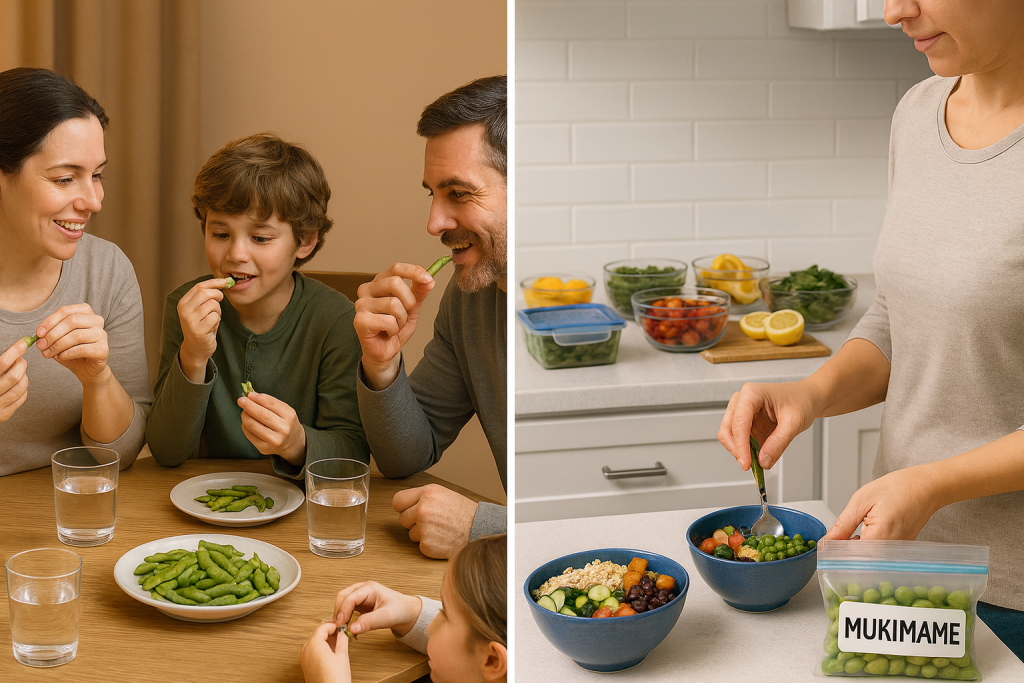
Choose traditional edamame when budget is a priority, as it costs less than mukimame. The price advantage becomes more significant when purchasing organic varieties or buying in bulk quantities.
Traditional edamame works well for entertaining and family meals. The pod-popping activity engages children and encourages slower eating patterns that support natural portion control. Serving edamame creates opportunities for conversation during meals.
Choose mukimame when convenience and time-saving are priorities, particularly for busy households with meal prep requirements. The ready-to-use nature eliminates pod removal time, streamlining cooking and eating processes.
Household Considerations
When comparing mukimame vs edamame, the versatility advantage of mukimame extends beyond mere convenience to encompass expanded culinary applications. Pre-shelled beans integrate seamlessly into cold salads, grain bowls, and mixed dishes where pod removal would be impractical or messy. This versatility makes mukimame particularly valuable for meal prep enthusiasts who prepare multiple meals simultaneously.
Consider both options for households that can accommodate the storage requirements and budget implications. This approach eliminates the need to choose sides in the Mukimame vs Edamame debate and instead embraces the distinct advantages each brings to different cooking situations. Many experienced cooks maintain both varieties in their freezers, selecting the appropriate option based on specific meal requirements and time constraints.
The decision framework should also consider the eating preferences and dietary needs of all household members, understanding these preferences helps guide purchasing decisions that satisfy everyone’s needs.

Final Thoughts
The grocery store confusion that initially sparked this exploration has evolved into genuine appreciation for both forms of these exceptional soybeans. What began as uncertainty about two similar packages transformed into understanding how identical foods can serve distinctly different purposes while delivering the same nutritional benefits.
Through extensive testing and comparison of both varieties, the choice between mukimame and edamame ultimately depends on matching the right product to your specific cooking needs and lifestyle demands. Neither option represents a superior choice in absolute terms, but rather different tools suited to different applications and preferences.
The modest price difference and unique applications each offers mean that maintaining both options provides maximum flexibility for different culinary situations. This approach eliminates the need to declare a winner in the Mukimame vs Edamame comparison and instead embraces the practical advantages each brings to modern cooking.
Whether you prioritize the traditional experience of pod-popping with its social and mindful eating benefits, or the convenience of pre-shelled beans with their versatility and time-saving advantages, both options support healthy eating goals while contributing to more sustainable food choices.
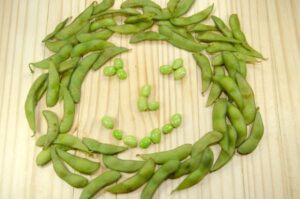
*We may earn a commission for purchases made using our links. Please see our disclosure to learn more.

